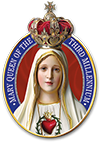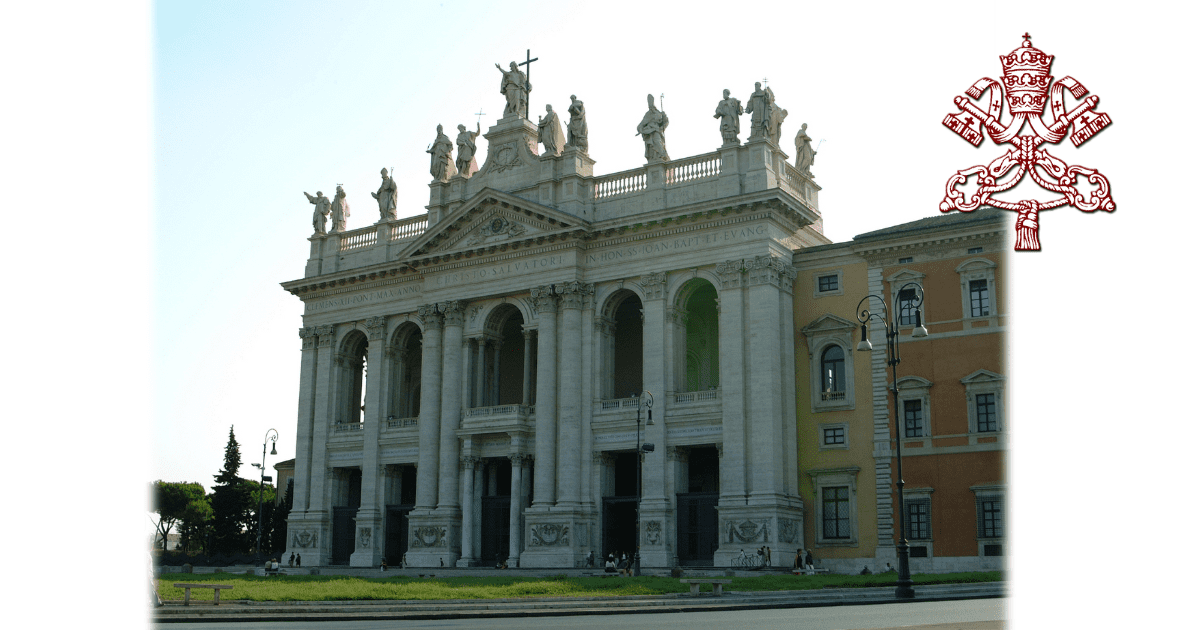Feast of the Dedication of the Lateran Basilica
The Church splendidly celebrates the feast of the Dedication of the Lateran Basilica, which bears the honorific title of “Omnium urbis et orbis ecclesiarum mater et caput,” or “Mother and head of all churches of the city [of Rome] and of the world.” It is the Cathedral of the Pope, contrary to what is commonly believed, given the role that St. Peter’s Basilica plays today. St. Peter’s is, in fact, only one of the four papal basilicas of the Eternal City.
Until the exile of the Popes in Avignon, in the fourteenth century, they resided in the Lateran Palace, formerly the property of the Laterani family, by whose name it became known. The Roman consul Plautius Lateranus was killed on suspicion of conspiracy by the infamous Nero, who confiscated his goods, including this edifice, around the same time that he was waging persecution against the Christians. Little did the tyrant imagine that, years later, it would all be donated to the Church by the Emperor Constantine, and would become the residence of the successors of Peter and the first Basilica of Christianity, dedicated by Pope St. Sylvester in the year 324.
In this Basilica, we find not only traces of various artistic styles, owing to the embellishments and additions carried out over the centuries, but also numerous and priceless relics. Among the most noteworthy are the table at which the Last Supper was celebrated (cf. Mt 26:20-28, Mk 14:18-24, Lk 22:14-17), part of the purple mantle with which the soldiers clothed the Divine Redeemer during the Passion (cf. Mk 15:17, Jn 19:2), the heads of St. Peter and St. Paul, and the goblet from which St. John the Evangelist—according to ancient tradition—was forced to drink a poison which, miraculously, did not harm him.
A link between Heaven and earth
As the Cathedral of Rome, St. John Lateran has a close personal association with the Supreme Pontiff, the link between us and eternity: “Whatever you bind on earth shall be bound in Heaven, and whatever you loose on earth will be loosed in Heaven” (Mt 16:19). In light of this prerogative, the Basilica has become a symbol of the Church’s unity.
It is also fitting to consider that, in her wisdom, the Holy Church established the liturgical cycle, among other reasons, to extend across the centuries, the graces granted at the historic moment being commemorated. Just as in celebrating each Christmas with true piety we are favoured with the blessings granted to Our Lady, St. Joseph and the shepherds before the manger, we are invited in today’s feast, to participate in the graces and supernatural joy of the Catholics of Rome when the Pope took official possession of his Episcopal seat, in the full enjoyment of religious freedom.
Born under the sign of persecution
To better understand the importance of this day, let us remember that the Holy Catholic Church was born under the sign of persecution, in circumstances so violent, at times, that the early Christians were forced to take refuge in the catacombs—Christian cemeteries—to practice their worship. In Ancient Rome, it was the custom to dig extensive tunnels, true labyrinths, in which to bury the dead. Those who ventured into these passages faced the danger of being lost forever. In times of persecution, our brothers who have gone before us marked with the sign of Faith had to conceal themselves in their depths—at that time without electric lighting—with a high risk of being reported, arrested and executed. In the Coliseum and Circus Maximus, numerous Christians manifested their adherence to the Faith with their very lives, being killed before spectators by wild beasts or amidst other terrible torments in the arena.
In the catacombs, the anniversary of martyrdom of those who had shed their blood in witness to Christ was also devoutly commemorated before their mortal remains preserved there—a custom that gave rise to the veneration of the relics of the Saints. Three centuries of faithfulness in this situation is a clear sign of the Church’s extraordinary strength in its cradle!
The religious freedom granted by Constantine with the promulgation of the Edict of Milan in 313 through the influence of his mother St. Helena, and the resulting springing up of countless churches throughout the empire—the Lateran Basilica holding a preeminent place among them—afforded the faithful indescribable relief and joy. The testimony of Eusebius of Caesarea is expressive in portraying the jubilation of the Christian people at the advent of this new era in Church history: “A splendid and radiant day, overshadowed by no cloud, illuminated the churches of Christ throughout the whole world with its rays of heavenly light, […] we brimmed with unspeakable gladness, and a divine joy flourished for all, to see every place that shortly before had been in ruins by the wickedness of tyrants, revived as if from a long and deadly pestilence. And the temples arose again from their foundations to unprecedented heights, endowed with far greater splendour than those that had been destroyed.”
This is why the feast of the Dedication of the Lateran Basilica was established in Rome, and later spread abroad. Today we rejoice to commemorate this great temple, which has impressed generations with its magnificence.


